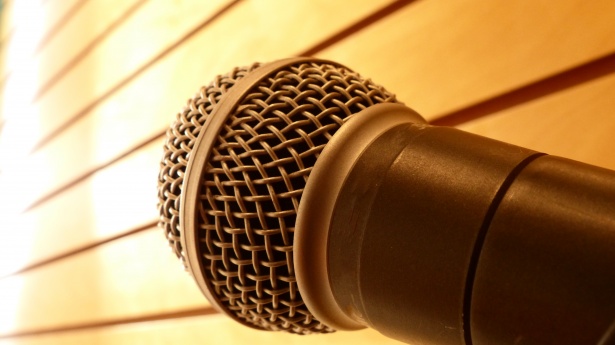Almost every Home Studio enthusiast will run into the dilemma of choosing a Microphone, whether it is to record or to buy. A microphone works pretty much like our ear. There is no fixed standard, meaning; there is no good or bad microphone. This is because of the various factors that influence the sound while recording.
Choosing a Mic in the Studio:
Some of the main factors include the room, the artist, frequency response of the mic, polar pattern (directional response) and size of the diaphragm. Every brand or type of microphone has different characteristics. I would like to list out some of the main factors.
– The Artist: A good artist is the first key to a great recording. In the case of a singer, one needs to understand the timbre of his/her voice. If time permits, setup at least three microphones before the session. Allow the singer to try out all the mics and then pick the Mic that is sonically pleasing to you.
– The Room: A noisy room or a studio close to heavy traffic is a boon to recording artists. This is the sole reason why artists and engineers spend on their Room Isolation and Acoustics. But not everyone can afford Sound-proofing or Acoustic treatments. In this scenario, the best way is to find the quietest spot in your room. Avoid using a condenser microphone. Some of them are too sensitive that you can hear your neighbor talking. Understand the polar pattern of the microphone, use its directional character and point it directly at the source. Also, understand the rejection points on the polar pattern of the microphone. This will help you position the mic in the best possible way. The polar pattern of the microphone is always mentioned on its box or you can check it on the website.
– Frequency Response: Frequency response of a microphone is defined as the way a microphone responds or reacts or hears different frequencies. Different microphones have different frequency responses. From a generic perspective, Condenser mics have an pleasing frequency response overall. Dynamic microphones comparatively have a lower frequency response than a condenser. A ribbon microphone is very sensitive and has the highest frequency response, meaning, it responds very well to higher frequencies. In this case, one can use a ribbon microphone on thin husky vocals. But these things change with respect to various factors as mentioned earlier.
Verdict: Understand that the Microphone responds like a ear and understand the type of source. If possible, experiment with different options. I have known big artists who use cheap chinese microphones as it sounds really good on their voice.
Choosing a Mic to buy:
There are tons of options in the market in terms of purchasing a Microphone. Every brand or seller out there is trying to bring out something unique in terms of build, quality, sound etc. How do you know which one to buy? The best way to decide is to understand what you are going to be doing. Moreover, factors like your recording environment, source and budget also contributes to your decision.
What are you going to track ?
Understanding the main usage of the Microphone will definitely make it easy for you to choose your Microphone. If your primary source is just a voice, then there is no point in buying an SM57 just because the dealer says it is the best snare mic. If you are going to be doing a bunch of things, then go for a microphone that is versatile. For example, an SM7b can be used on Vocals, Guitar Cabinets, Voice-overs etc. If possible drop by a friends studio and try out some of his Microphones.
Recording Environment:
As discussed before, your recording environment is a major factor that you need to be worried about. If your studio is in a noisy neighborhood, then a condenser microphone is going pick all of that into your recording. A dynamic microphone would be a better option here as it is very directional (Cardioid Polar Pattern). One can use natural absorbers like curtains and book shelfs that act as natural acoustic treatment. Though they don’t do much, filling the room with the usual stuff make the room sound little better.
Budget:
This is a big concern for many artists. But the good news is that, there are really good microphones that fits almost any budget. Don’t let budget affect your art, but, yes, it is true that you get what you pay for. There are various mics that start from a lower budget. Some of them are given below,
- Shure SM58
- Audio Technica AT2020
- Aston Origin
- Rode NT1A
- Shure SM7b
- Blue Bluebird
- Aston Spirit
- Warm Audio WA47jr.
Verdict: The best way to buy a Microphone is to keep the above-mentioned factors in mind and do some research. There are tons of data on the Internet. As already mentioned, if a microphone is helping you achieve what you want, then you got it. And most importantly, feel free to experiment.








